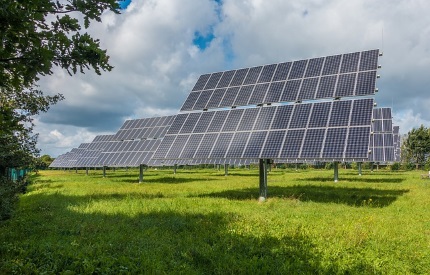Clean energy—whether in the form of solar, wind, electric vehicles, hydrogen fuel cells, or something else—has been discussed as an investment opportunity by financial talking heads for what seems like ages. Some of the industries mentioned above have gone through significant periods of growth. At other times, companies in these spaces have seen considerable volatility in their stock prices.
The media and investor attention has muddied the picture for some, if not all, of the clean energy industries to an extent. It can be hard to distinguish between hype and true growth potential.
Generally speaking, the sky may be the limit regarding the growth potential of clean energy. However, market size and product feasibility are two different things. In many cases, there are roadblocks to growth in the clean energy arena.
In some cases, the technology isn’t available yet to harness the full effectiveness of a particular type of clean energy. In other cases, it may be that the cost of the technology is too high for wide adoption to take place. What’s more, there could be regulatory or political reasons for a low rate of adoption.
Ultimately though, most energy in the U.S. and around the globe will be produced from clean sources. Whether it takes 10 years or 50 years, I don’t think there’s a question that clean energy will eventually replace fossil fuels (at least in most use cases).
What’s been interesting is seeing the wide-ranging interest in clean energy occurring from today’s retail investors. 2020 was the year of the electric car company and hydrogen fuel cells, for example. But it doesn’t stop there. Clean energy ETFs have proliferated over the last year.
For instance, iShares Global Clean Energy ETF (ICLN) has been around since 2008 but has attracted scant attention. However, over the last year, the ETF is up over 140% and now sits at over $5 billion in assets under management.
If the options market is any indication, ICLN could be moving higher over the summer. A large block of call spreads traded this past week in ICLN may be suggesting the stock is going to climb prior to July expiration.
As an aside, a call spread is simply buying a call near the stock price and selling another call at a higher strike. The impact of this strategy is to (often significantly) reduce the cost of the trade. In return, the spread caps the upside potential.
Back to the trade, 10,000 30-35 call spreads traded in ICLN July calls. The 30 calls were purchased, while the 35 calls were sold simultaneously. This trade occurred with the stock at $21.59, and it cost about $0.28 per spread. That means the capital outlay on the trade is roughly $280,000 for 10,000 spreads, which is also the max loss potential on the trade if ICLN doesn’t climb above $30 by July expiration.
Max gain on the trade is $4.72 (the width of the spread of 5 minus the cost of the trade of $0.28) and occurs if ICLN is above $35 at expiration. If max gains occur, profits will be a lofty 1,686% or $4.7 million dollars. Of course, this isn’t a likely scenario as ICLN would need to climb 62% higher by July.






